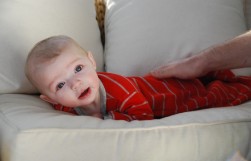TEENS’ SLEEP
Research shows that teens need 8½ to 9½ hours of sleep a night. So, a teen who needs to wake up for school at 6 a.m. would have to go to bed at 9 p.m. to reach the 9-hour mark. Studies have found that many teens have trouble falling asleep that early, though. It’s not because they don’t want to sleep. It’s because their brains naturally work on later schedules and aren’t ready for bed.
During adolescence, the body’s circadian rhythm (an internal biological clock) is reset, telling a teen to fall asleep later at night and wake up later in the morning. This change in the circadian rhythm seems to be due to the fact that the brain hormone melatonin is produced later at night in teens than it is for kids and adults. So, teenagers have a harder time falling asleep.
Sometimes this delay in the sleep-wake cycle is so severe that it affects a teen’s daily activities. In those cases it’s called delayed sleep phase syndrome, also known as “night owl” syndrome. And if your sleep-deprived teen brings mobile devices into bed, surfing or texting late into the night, the light exposure could also disrupt circadian rhythm and make it harder to sleep.
CONCLUSION
Maybe the “light sleepers” just need to be given a chance to descend into the deep sleep stages before you practice your trumpet lessons.
SOURCES
1. Sleep. (23 Oct. 2007).WordNet 3.0. Princeton University.
2. National Sleep Foundation. (2002). Sleep in America Poll.
3. Dement, W. C. (1999).e Promise of Sleep
4.National Highway Traffi c Safety Administration. National Survey of Distracted and Drowsy Driving Attitudes and Behavior: 2002.
5.Long, T. (2008). Dec. 3, 1984: Bhopal, ‘Worst Industrial Accident in History’.Wired.
6.United States Nuclear Regulatory Commission. (2013).
7. National Geographic New, 24 Feb. 2005.
8. Personal account with the author.
9. Dement, W. C. (1999).e Promise of Sleep
10.Circadian Rhythm. (29 Oct. 2007).American Heritage ScienceDictionary. Houghton-Miffl in.
11.Butkov. (2007).Fundamentals of Sleep Technology.
12.Sleep Management Services. (2002)Principles of Polysomnography.
13.Principles and Practice of Sleep Medicine, 3rd ed.
14.Sleep Management Services. (2002).Principles of Polysomnography.
15.Butkov. (2007).Fundamentals of Sleep Technology.
16. Suzuki, K., et al., (2003). Sleep. 26(6).
17. National Sleep Foundation. (2007). Sleep in America Poll
















